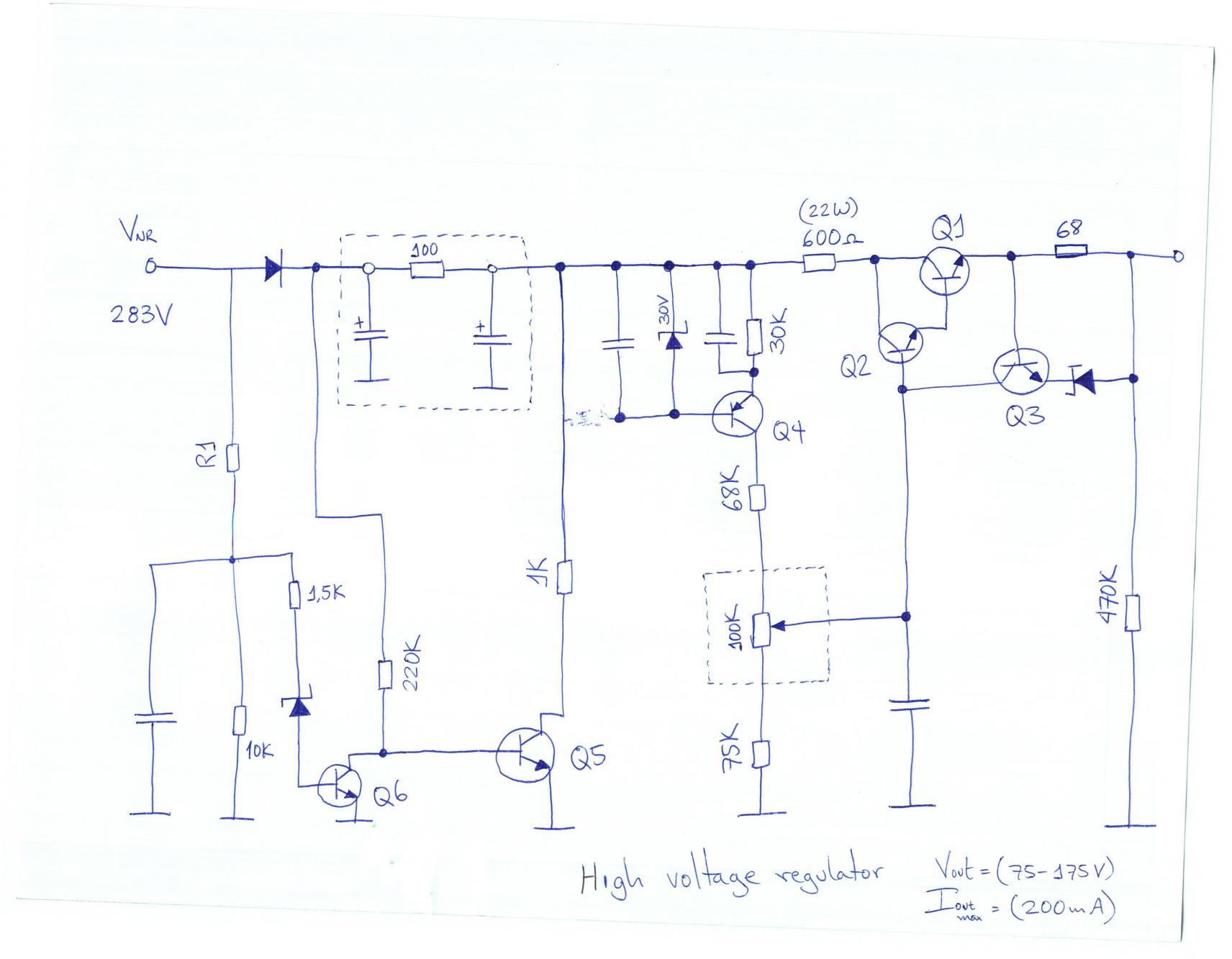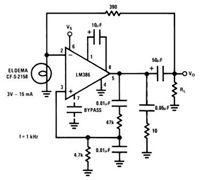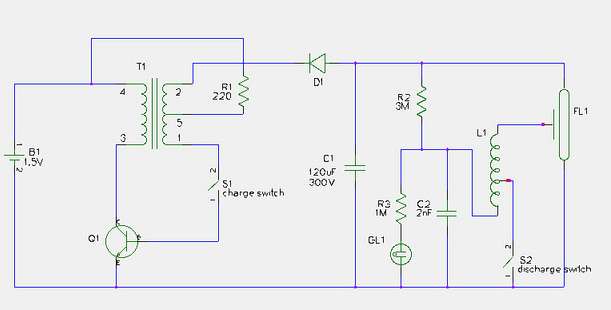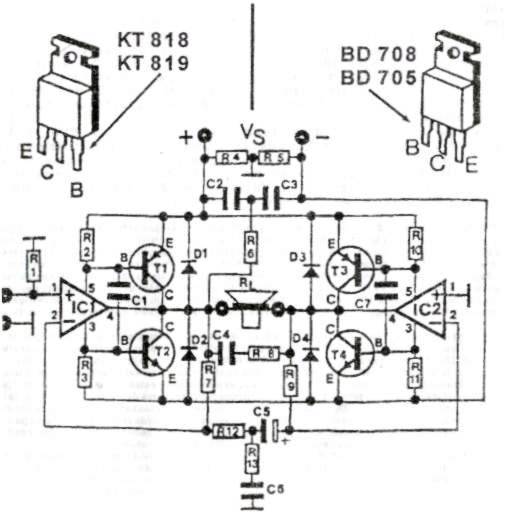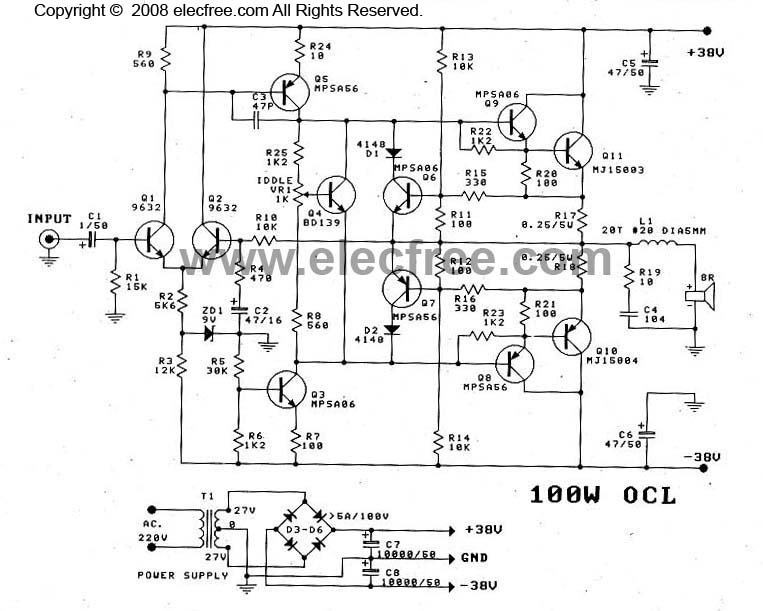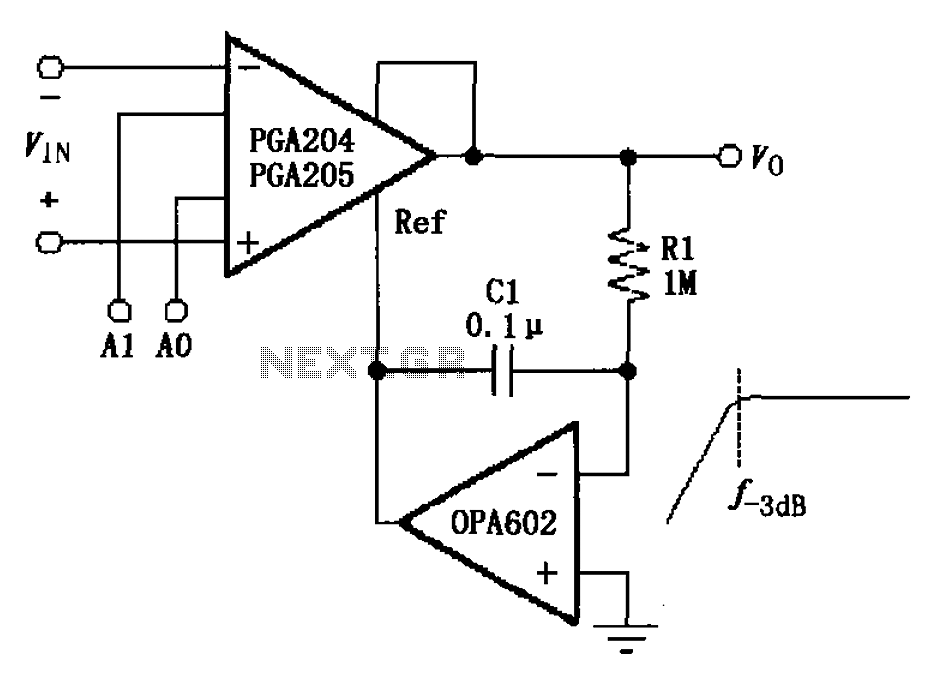
60-100W Hi-Fi Power Amplifier
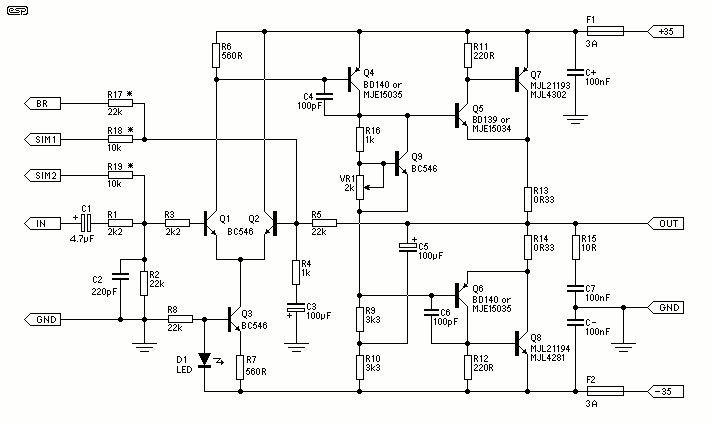
The output devices are MJL4281A (NPN) and MJL4302A (PNP), and feature high bandwidth, excellent SOA (safe operating area), high linearity and high gain. Driver transistors are MJE15034 (NPN) and MJE15035 (PNP). All devices are rated at 350V, with the power transistors having a 230W dissipation and the drivers are 50W.
The MJL4281A and MJL4302A are complementary power transistors designed for high power audio, disk head positioners and other linear applications. These devices can operate in the frequency range with high bandwidth. The high linearity ensures minimal distortion in the output signal, making these transistors ideal for applications requiring clean and clear signal transmission. The high gain of these transistors allows for a larger output signal for a given input signal, enhancing the overall performance of the circuit.
The MJE15034 and MJE15035 are driver transistors that are also complementary to each other. These transistors are typically used to amplify the current or power of a signal before it is sent to the output devices. The high voltage rating of 350V ensures that these transistors can handle high power applications without risk of breakdown or damage.
The power transistors, MJL4281A and MJL4302A, have a power dissipation of 230W. Power dissipation is the process by which an electronic component converts the electric power into heat. This is a critical specification as it determines how much power the transistor can handle before it overheats and potentially fails.
The driver transistors, MJE15034 and MJE15035, have a power dissipation of 50W. This lower power dissipation indicates that these transistors are intended to handle lower power signals compared to the output transistors. However, they still have a significant role in the overall functioning of the circuit, as they condition the signal before it is amplified by the power transistors.
In conclusion, this circuit utilizes a combination of high-power output transistors and lower-power driver transistors to achieve high performance in high power applications. The high voltage rating, power dissipation, and the excellent safe operating area (SOA) of these devices contribute to their robustness and reliability.The output devices are MJL4281A (NPN) and MJL4302A (PNP), and feature high bandwidth, excellent SOA (safe operating area), high linearity and high gain. Driver transistors are MJE15034 (NPN) and MJE15035 (PNP). All devices are rated at 350V, with the power transistors having a 230W dissipation and the drivers are 50W.
🔗 External reference
The MJL4281A and MJL4302A are complementary power transistors designed for high power audio, disk head positioners and other linear applications. These devices can operate in the frequency range with high bandwidth. The high linearity ensures minimal distortion in the output signal, making these transistors ideal for applications requiring clean and clear signal transmission. The high gain of these transistors allows for a larger output signal for a given input signal, enhancing the overall performance of the circuit.
The MJE15034 and MJE15035 are driver transistors that are also complementary to each other. These transistors are typically used to amplify the current or power of a signal before it is sent to the output devices. The high voltage rating of 350V ensures that these transistors can handle high power applications without risk of breakdown or damage.
The power transistors, MJL4281A and MJL4302A, have a power dissipation of 230W. Power dissipation is the process by which an electronic component converts the electric power into heat. This is a critical specification as it determines how much power the transistor can handle before it overheats and potentially fails.
The driver transistors, MJE15034 and MJE15035, have a power dissipation of 50W. This lower power dissipation indicates that these transistors are intended to handle lower power signals compared to the output transistors. However, they still have a significant role in the overall functioning of the circuit, as they condition the signal before it is amplified by the power transistors.
In conclusion, this circuit utilizes a combination of high-power output transistors and lower-power driver transistors to achieve high performance in high power applications. The high voltage rating, power dissipation, and the excellent safe operating area (SOA) of these devices contribute to their robustness and reliability.The output devices are MJL4281A (NPN) and MJL4302A (PNP), and feature high bandwidth, excellent SOA (safe operating area), high linearity and high gain. Driver transistors are MJE15034 (NPN) and MJE15035 (PNP). All devices are rated at 350V, with the power transistors having a 230W dissipation and the drivers are 50W.
🔗 External reference
